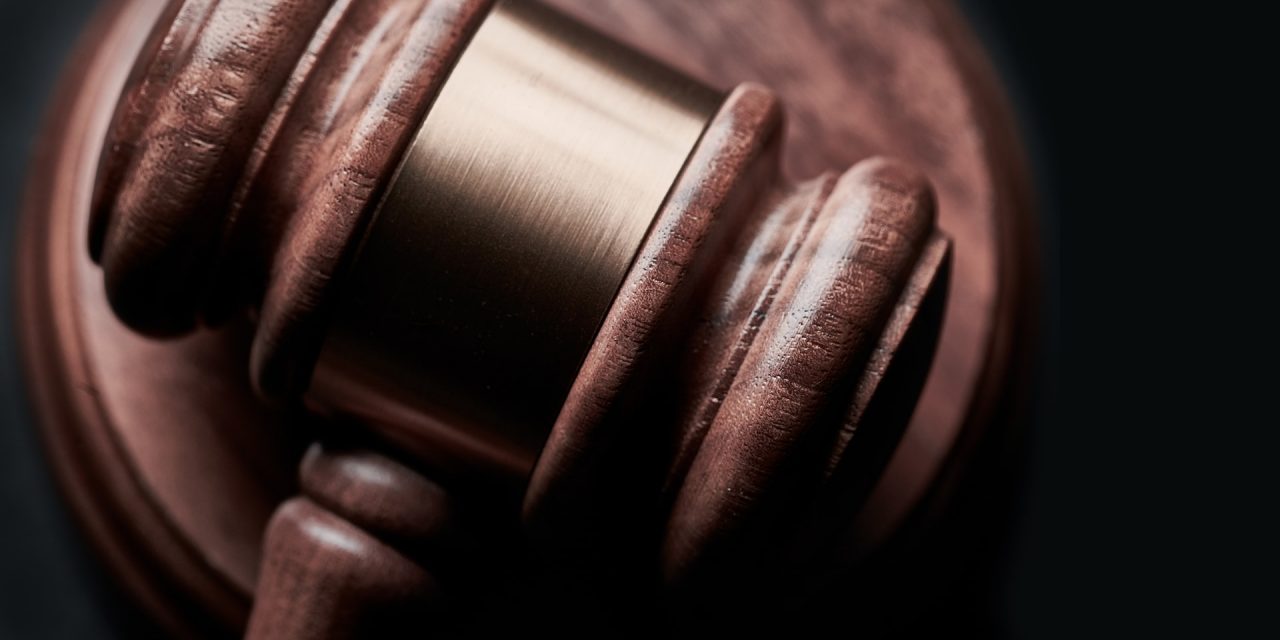By Bojana Kostić
 Bojana Kostić is a legal researcher and practitioner specialised in information and media law. In 2019, Bojana with her team of researchers — Dr. Abdelkrim Hizaoui, a researcher on media regulation, Manijza Aziz, a knowledge and quality officer at Free Press Unlimited, Miloš Stojković, a media lawyer, Wafa Ben-Hassine, an independent consultant on law and technology, and Dima Samaro, MENA policy associate at Access Now — compiled a research study entitled “Legal systems: friend or foe for the safety of journalists”, outlined in this blog post. The study is not publicly available, but those who would like to receive a copy are requested to contact Ms. Kostić at the email address bojana.kostic.email@gmail.com.
Bojana Kostić is a legal researcher and practitioner specialised in information and media law. In 2019, Bojana with her team of researchers — Dr. Abdelkrim Hizaoui, a researcher on media regulation, Manijza Aziz, a knowledge and quality officer at Free Press Unlimited, Miloš Stojković, a media lawyer, Wafa Ben-Hassine, an independent consultant on law and technology, and Dima Samaro, MENA policy associate at Access Now — compiled a research study entitled “Legal systems: friend or foe for the safety of journalists”, outlined in this blog post. The study is not publicly available, but those who would like to receive a copy are requested to contact Ms. Kostić at the email address bojana.kostic.email@gmail.com.
It is often suggested that the holistic approach to the safety of journalists, which presupposes engagement on three different levels: physical, mental and digital (see for example: An Attack on One is an Attack on All (IPDC, 2017), can advance a safe environment for journalists and the media. Despite the unquestionable relevance of this approach and its profound importance in countering the various threats journalists face in their work, it fails to incorporate the salient role of legislation and state institutions in shaping the safety landscape.
There are at least two ways in which one can conceptualise the legal aspects of the safety of journalists. The first is through the lens of legal and institutional mechanisms for the protection of journalists. Besides the criminal justice system that primarily addresses serious assaults, there is also a plethora of other legislative instruments (e.g. media laws, access to information laws, data protection law) and institutions as well as non-state actors that are equally important avenues for the protection of journalists. Secondly, there is increasing interest across the field of media freedom regarding legal harassment practices and how they impede journalists work and safety. It is hard to capture the notion of legal harassment as it comes in various forms and shapes, but its underpinning goal is the same across all of these forms—to deter journalists by relying on some form of institutional power abuse. These challenging practices have a potential to shrink the overall civic space and undermine media freedom. As such, it becomes a broader human rights and societal issue.
It is against this background that the legal research study “Legal systems: friend or foe for the safety of journalists”, carried out in 2019 with a group of researchers, explores this dual nature of the legal system that can be used to both to protect and intimidate journalists. This in-depth study, through country reports and comparative analysis, sheds light on the numerous normative, procedural and institutional shortcomings that shape media freedom and safety environments in Tunisia, Iraq and Serbia. Thus, in this study, the safety of journalists is perceived as a dynamic notion that creates conditions under which journalism functions. In that sense, the notion of safety is constantly shaped through the interplay of several aspects: 1. the overall state environment (e.g. political and societal situation), 2. the media freedom landscape, 3. the legislative and institutional safety framework, and 4. the legal practices and institutional responses to safety issues.
Building upon the authors’ knowledge of and experience in the MENA and Balkan regions and the noted interplay, the study focuses on these countries as it sought to explore as well as benefit from an unique insight into a diverse spectrum of legal and safety issues that differ significantly across these countries: from a dangerous security situation in Iraq, to a lack of media freedom culture in Tunisia, to a well-established legal system and sophisticated assaults in Serbia. In other words, in all three countries, the level of legislative and institutional progress is different, as are the associated safety risks.
 To explore these complex issues and dual nature of the legal and institutional systems, the study explores laws and practices through the lenses of the UN system of protection, best described as a context-sensitive and specialised system that sets forth a refined framework of protection, tailored to meet the needs of journalists in relation to their safety and the safety of their work. Given the myriad of safety risks, the study focuses on the list of assaults formulated in the UN Sustainable Development Goal (SDG) Indicator 16.10.1. The diverse range of normative and procedural, legislative and institutional responses, policies, practices, and case-law have been explored and matched with the SDG 16.10.1 resulting in a comprehensive patchwork of pervasive and disruptive mechanisms behind the impunity and legal harassment of journalists.
To explore these complex issues and dual nature of the legal and institutional systems, the study explores laws and practices through the lenses of the UN system of protection, best described as a context-sensitive and specialised system that sets forth a refined framework of protection, tailored to meet the needs of journalists in relation to their safety and the safety of their work. Given the myriad of safety risks, the study focuses on the list of assaults formulated in the UN Sustainable Development Goal (SDG) Indicator 16.10.1. The diverse range of normative and procedural, legislative and institutional responses, policies, practices, and case-law have been explored and matched with the SDG 16.10.1 resulting in a comprehensive patchwork of pervasive and disruptive mechanisms behind the impunity and legal harassment of journalists.
The study highlights that the legal systems, due to their complexity and inter-connection with the political and societal contexts, prompts calls for a deeper and comprehensive understanding of the norms and practices that stem from them. Our findings demonstrate that the criminal law systems are, in principle, not equipped with specifically designed instruments for the protection of journalists. The criminal law systems in Tunisia and Iraq do not envisage concepts such as special prosecutorial and investigative units nor procedures to try cases against journalists. However, even when there is such a system in place, such as in Serbia where journalists are granted a special status in some of the criminal law provisions that does not mean that those involved in assaults will be sanctioned.
On the other hand, the study’s findings also suggest that state authorities—including the judiciary in Serbia, Tunisia and Iraq—are engineering legal provisions, avoiding abolishing old laws (in Iraq in particular), and implementing harmful norms (Anti-terrorism law and Code of Military Justice in Tunisia) and mechanisms of control (open targeting of journalists in Serbia by political representatives), all under the name of aspiring toward “normalisation” and “democratisation” while they are shielded from the open criticism and scrutiny of journalists. Criminal liability remains a significant instrument to silence journalists, in addition to high monetary fines and draining civil procedures. The usage of fabricated charges, open-ended terms and the frivolous interpretation of laws by judges, which directly limit media freedom and chill speech, is a widespread practice.
Thus, the judiciary and legislation appear to be additional instruments of control over the media. In that sense, there are multiple concerns relating to the connection between journalistic work and the risk of legal harassment: flawed and vague legal provisions as well as procedural misconduct and judicial incompetence. In addition, as noted, the problem of impunity goes beyond the ability to provide journalists with efficient redress mechanisms; it encompasses the notion of an enabling environment and “collective interest in freedom of expression” (C. Draghici and L.M. Wood, 2019).
Drawing on these insights, this research study demonstrates that to gain an accurate and comprehensive understanding of these growing concerns, there needs to be a more structured methodology to research the legal aspects of the safety of journalists on a global level. Given the differences and constant transformation of the legal and safety landscape, this study has sought to propose a methodological framework to consistently explore and monitor the legal mosaic in the context of UN SDG 16.10.1 — a “missing link” in properly understanding the landscape for the safety of journalists.

